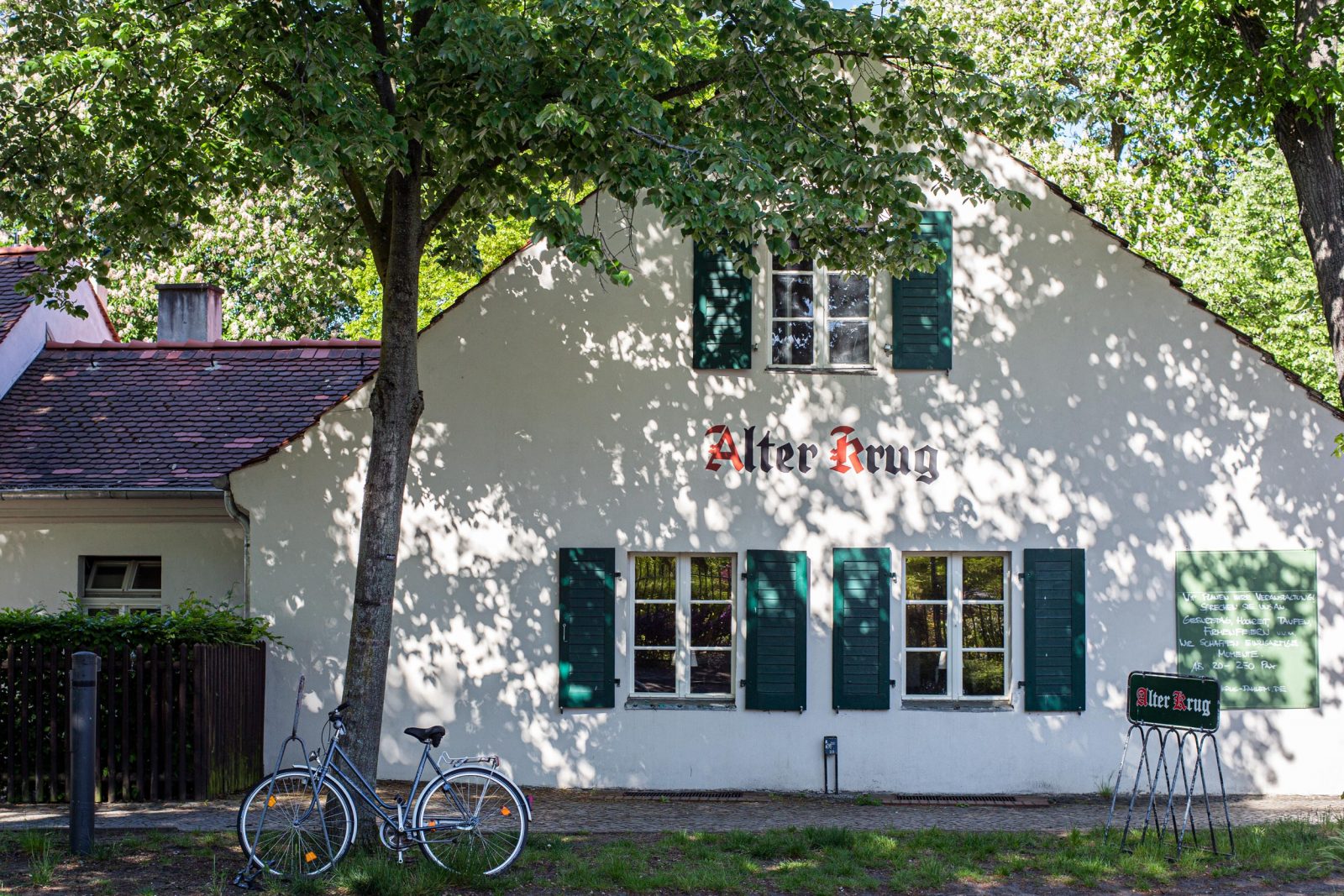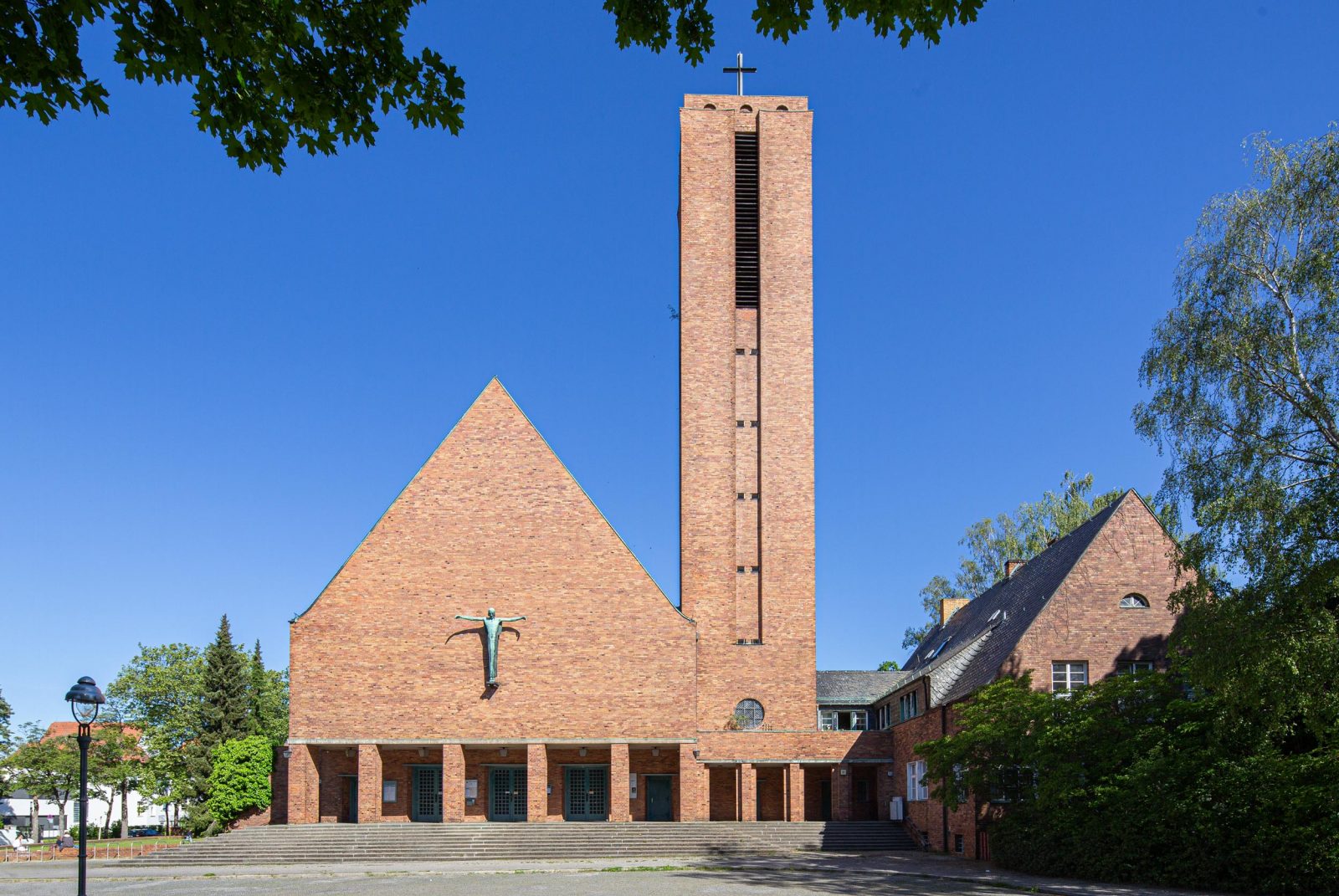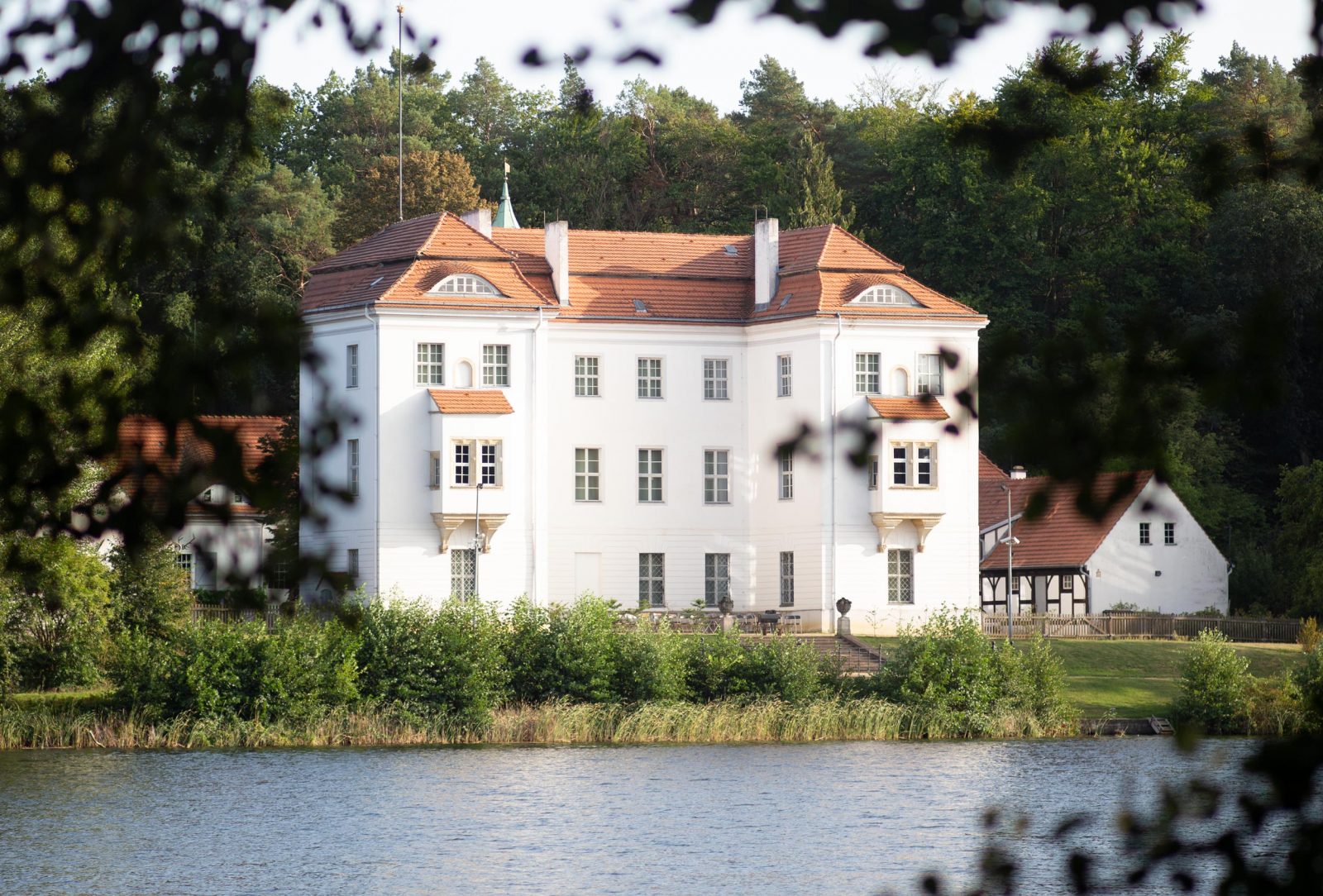Dahlem – the home of excellence

Dahlem is known, far beyond the city bounds of Berlin, for being a leafy residential area with more than its fair share of splendid villas, and for being a place of education and research. If one were to attempt to sum up the characteristics of Dahlem in just one word, that word would have to be “excellence”. This also applies to its location, half-way between the former royal seat of Berlin and the one-time garrison city and present-day state capital of Potsdam. For more than a hundred years, Dahlem has set the standard for upmarket living.

Why Dahlem?
Even today, emerging from below the thatched eaves of Dahlem-Dorf U-Bahn station, one still gets the feeling of having left the city of Berlin far behind. The fields of Domäne Dahlem, which stretch away behind the station, give the well-preserved historic heart of what used to be a village a very real reminder of its rural past. The general impression one gets of being on a village green is further heightened by the presence of an inn, the“Alter Krug”, and the farm-workers’ cottages just to the south of it. The village green itself delights visitors and residents alike with wonderful trees, a war memorial, and the icehouse which lies below – its existence only hinted at by the presence of a mysterious door in the side of the hill. The church of St Annen is to be found at the western entrance to the village. The precise date of its origin is a matter of some discussion. The earliest date suggested is somewhere in the middle of the 13th century, that is to say around the time of the first documented mention of Dahlem, which was in 1275. More conservatively, a 14th century origin has also been proposed.
Dahlem – the village and its churches
The former manor on the northern edge of the village green was built around 1680 for Kuno Hans von Wilmersdorff (1638-1720), who acquired Dahlem in 1671. It incorporates parts of a pre-existing structure. The two-storey building is built in a restrained Baroque style, with gables which echo the forms of the Renaissance. Today, the manor is one of the oldest secular buildings in Berlin. In the rearmost corner of the house a portion of the previous manor, which stood on this spot in the 14th century, remains in the form of a lierne-vaulted room of Late Gothic construction.

A significantly more recent church is the Jesus-Christus-Kirche at the junction of Hittorfstraße and Faradayweg. It was consecrated in 1932 and was the first place where Pastor Martin Niemöller (1892–1984) carried out his religious duties. Niemöller was a representative of the Confessional Church, and had something of an an ambivalent relationship with National Socialism during the period of the Third Reich. Though he welcomed Hitler’s coming to power in 1933, National Socialist Germany’s ongoing consolidation of powers caused him to voice increasing opposition to the regime, resulting in his temporary imprisonment in the concentration camp of Sachsenhausen in 1938. Martin-Niemöller-Haus on Pacelliallee 61 memorialises the history of the Confessional Church. Jesus-Christus-Kirche owes much of its present-day significance to its excellent acoustics. Herbert von Karajan (1908–1989) used it for recordings of the Berlin Philharmonic and to this day, well-known artists and production companies use it for their sound recordings.

Dahlem – a German Oxford
In protest against the increasingly Stalinist ideological bent of the research and teaching taking place at Universität Unter den Linden, Freie Universität Berlin was founded in Dahlem in 1948. The choice of location was no mere matter of happenstance. Even before the First World War, there had been plans for the establishment of a campus for academic research and teaching here. In 1901, the undersecretary of the Prussian Ministry of Education, Friedrich Althoff (1839–1908), had the Königliche Domäne Dahlem broken up and divided into parcels. His aim was “the founding of a settlement for the purposes of carrying out outstanding scientific work – a German Oxford”. The intention was to combine residential spaces with academic work along the lines of the British model. The scientific institutes founded over the years which followed were the workplaces of twelve Nobel prize winners and many other distinguished scientists, including Max Planck (1858–1947), Otto Hahn (1879–1968) and Albert Einstein (1879–1955).

Over the decades, the Freie Universität has transformed from a university for the masses into a top-level institution. Within the humanities, it is of international standing, ranking third in Europe after Oxford and Cambridge. The architecture of the various institutes is quite remarkable. A more recent example is that of the Philological Library, built according to plans drawn up by star architect and redesigner of the Berlin Reichtag, Norman Foster (born 1935). The “Berlin Brain” is its very fitting nickname, and is a reference to more than just the rounded form of its outer shell and its idiosyncratic internal layout, with the two levels of the building being divided into two hemispheres, in a similar fashion to the anatomy of the human brain.
Dahlem – Villas between the Hunting Lodge and the Botanical Garden
Villas and famous residents have been a distinguishing feature of this area for a good 100 years now. Moritz Jandorf (1879–1962) was a brother of Adolf Jandorf (1870-1932), the founder of the department stores A. Jandorf & Co. and KaDeWe. He was also an employee within his brother’s business and had a villa built on a plot on Gelfertstraße 32/34 in 1923–24. The result was a building of imposing proportions, with impressively interlocking volumes and a beautiful symmetry of composition. During the 1920s, Dahlem was also home to Fritz Lang (1890–1976), the film director who brought German film to world prominence in 1927 with the film “Metropolis”. Hildegard Knef (1925–2002) grew up on Schöneberg’s Rote Insel, but once she had started her career at the Ufa in the 1940’s, this made it possible for her to make the move to Dahlem. She spent the last weeks of the war at Gelfertstraße 37 with her lover, a dramaturgist at the Ufa, who acquired the villa after its Jewish owners were expropriated.
Generally speaking, the villas of Dahlem make use of a classical architectural vocabulary and are encircled by park-like gardens. A clear exception to this is Haus Maurer, Am Erlenbusch 14A, whose plain form stands in stark contrast to that of its neighbours. This is one of the last two private homes designed by Walter Gropius (1883–1969), the founder of the Bauhaus, before he emigrated in 1933. It is one of the most noteworthy Functionalist buildings in Berlin.

Jagdschloss Grunewald, a hunting lodge situated on the shores of the lake of the same name, marks the westernmost boundary of Dahlem. Built in 1452, it is the oldest extant stately home in Berlin and houses a collection of over 200 paintings. It provides an interesting insight into art in Brandenburg and Prussia from the Renaissance onwards, though with the exception of the reign of Friedrich II (1712–1786). The Botanical Garden marks the eastern boundary of this leafy neighbourhood. The site, which was created between 1897 and 1903, and replaced the old Botanic Garden in Schöneberg, also holds the grave of the director of the Prussian Ministry of Education Friedrich Althoff (1839–1908), who arranged for the relocation of the gardens.

Why Dahlem? That’s why!
Leafy and quiet, yet close to the city and full of cultural and scientific significance: Dahlem is full of superb residential properties and provides for a wonderful quality of life. The presence of the university campus, the many research institutes, and the various museums, such as the Brücke-Museum und dem Museum Europäischer Kulturen means that public areas, streets, squares, cafés and restaurants are frequented by a diverse and international mixture of visitors. Excellent transport connections to Potsdam and to the centre of Berlin are provided by the S-Bahn, the U-Bahn, and Bundesstraße 1. The River Havel and the autobahn network with connections all over are also very much on your doorstep.
